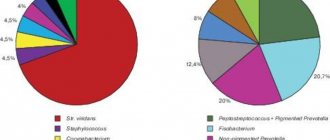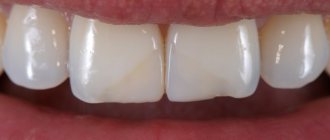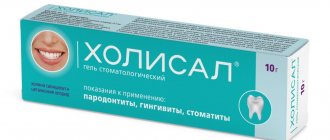Inflammation of the lymph nodes is most often a consequence of infection entering the body. In most cases, this symptom indicates the presence of pathology of certain organs. Inflammation of the lymph nodes in the neck, a symptom of which is their noticeable enlargement, is characterized by painful sensations in the affected area. The main purpose of this reaction is to prevent the spread of infection throughout the body.
In medical practice, this inflammation is called lymphadenitis. In the absence of timely, qualified treatment, it can develop into a separate disease. Subsequently, it leads to serious complications that pose a great danger to human life.
Ask a Question
A little about biopsy
Lymph node biopsy has two main goals:
- Detection of cancer;
- Detection of the infectious process in the lymph nodes.
Lymph nodes are an important element of the body's immune system, acting as “barriers” to the lymphatic vessels.
Lymph penetrates all internal organs and tissues of a person through lymph vessels. But along with lymph, unwanted bacteria and cancer cells can penetrate. And here the lymph nodes retain cancer cells. Such lymph nodes are called regional.
As the cancer develops, it can give metastases, which primarily affect nearby organs. Oncological diseases of the lungs and lymphoproliferative diseases more often metastasize to the supraclavicular and cervical lymph nodes.
Diagnosis of lymph nodes makes it possible to understand whether there are pathogenic cells in them.
In most cases, manipulation is carried out using a needle and syringe. This process is called a needle aspiration biopsy.
By enlarging, lymph nodes often signal the presence of pathologies, some of which are:
- The lesion is metastatic;
- Lymphomas;
- Sarcoidosis.
Using diagnostic techniques, the doctor has the opportunity to determine the optimal treatment tactics. The technique is highly informative, but it is necessary to remember: a positive result of the study remains so, but a negative one may also be erroneous.
The latter occurs more often due to the fact that pathogenic cells simply do not enter the removed material (biopsy).
After the procedure, the biopsy specimen is examined histologically or immunohistochemically.
The problem is that the biopsy obtained during puncture manipulation is not enough to conduct these studies.
An excisional lymph node biopsy is a procedure to remove the lymph nodes. It is performed through small incisions. As a result of the intervention, the lymph node is completely removed, using local anesthesia for pain relief.
After removal of the lymph node, it is sent for histological examination.
This approach makes it possible:
- Detection of lymphomas;
- Determining the type of disease;
- Determination of optimal treatment tactics.
If pathogenic cells are identified as a result, surgical intervention is used.
Bacterial lymphadenitis
Lymphadenitis is of bacterial, viral or oncological origin. Antibiotics must be taken for bacterial infections. To establish an accurate diagnosis, the doctor prescribes a series of clinical examinations.
To establish the inflammatory process, it is necessary to conduct a blood test. The results show an increase in lymphocytes, and with bactericidal effects, leukocytes, neutrophils and other forms. The ESR is also increased due to inflammation.
To exclude other diseases occurring in parallel, an additional series of tests is prescribed. Instrumental methods are used to determine lymphadenitis and characterize the pathology (density, size and consistency). The methods used are ultrasound, computed tomography and magnetic resonance imaging.
Indications and contraindications
In most cases, the procedure is indicated to identify cancerous tumors.
Thus, in case of skin melanoma, the sentinel lymph nodes located in close proximity to the tumor site are examined. This helps determine the stage of the disease, as well as determine treatment tactics.
Suspicion of lymphoma is another indication. When the lymph node is removed and examined, the doctor has an idea of the exact type of pathology, which, in turn, is crucial when choosing treatment tactics.
The procedure may be indicated for the purpose of identifying non-oncological diseases, such as tuberculosis, lymphadenopathy, sarcoidosis, etc.
There are a number of other indications for conducting research:
- Lack of results in long-term treatment of enlarged lymph nodes;
- Enlarged lymph nodes can be felt during palpation, but there is no pain, there are signs of intoxication;
- Lymph node size > 1 centimeter.
Any intervention has a number of contraindications. In the case of the described technique, they become:
Core biopsy of the breast
- Suppuration of the lymph nodes and adjacent tissues;
- Poor blood clotting;
- Curvature of the cervical spine, some others.
Erythrocyte sedimentation rate (ESR)
What it is.
A blood test that shows how quickly blood cells settle to the bottom of a test tube over the course of an hour. Allows you to understand whether a person has hidden inflammation. ESR is often prescribed along with general blood tests - we wrote about it in a previous article.
How it works.
Blood consists of cells: red erythrocytes, white leukocytes and lymphocytes. They float in plasma, a salty liquid with proteins dissolved in it. As it moves through the vessels, all this is continuously mixed, so the blood resembles red paint. But if you leave it standing in a thin wedge capillary tube, the blood stratifies: red blood cells and white blood cells fall to the bottom under the influence of gravity.
Normally, cells descend to the bottom slowly. But if a person begins to experience inflammation, protective immunoglobulin proteins and fibrinogen appear in his blood - a protein that sews up wounds. These two proteins stick to the surface of red blood cells so that they sink faster. If a laboratory technician sees that a red precipitate has formed prematurely at the bottom of the capillary, he has the right to suspect that the person has hidden inflammation. But just to suspect: it happens that the ESR increases for other reasons not related to inflammation.
Why is it prescribed?
ESR is a nonspecific analysis. That is, it allows us to say that somewhere in the body there is inflammation, but it does not explain why it happened. Only a doctor can make a conclusion about this after examining the patient: in order to understand the cause of inflammation, additional information is most often needed.
As a rule, doctors prescribe ESR for a reason, but if they already suspect that there is an inflammatory process going on somewhere. Most often, such patients complain of headache, temperature above 37°C, pain in the neck, shoulders or joints, unexplained loss of weight or appetite.
“ESR is a very non-specific indicator, it can increase in many cases,”
says a therapist at one of the clinics in Moscow.
— As a rule, ESR is prescribed for rheumatic diseases - these are systemic diseases in which the immune system attacks the patient’s own tissues.
These are systemic lupus erythematosus, rheumatoid arthritis, vasculitis. The degree of severity of the process can be judged by the value of ESR. If the ESR norm is usually up to 25, then with these diseases the indicator can be 40 - this indicates the average severity of the process. If the ESR rises to 80, the process is even more difficult.” The doctor clarifies that ESR can be a valuable indicator if you compare its results with the data of a general blood test. If a patient suddenly, against the background of general well-being and a “calm” general blood test, reveals a huge ESR in the range of 80-100, this makes one think about a cancerous tumor. In some rather rare cases, with such an ESR, we can talk about inflammatory diseases, suppuration - but first of all, the doctor must think about cancer.
ESR also increases with pneumonia. If we are talking about coronavirus disease, then this analysis may partly indicate the severity of coronavirus pneumonia. Because if the ESR is elevated slightly above normal, to 27-30, the inflammatory process is moderate. If the ESR is 45-50, the inflammation is more pronounced. But ESR is an inaccurate analysis, because it can increase even with dental caries, pregnancy and many other conditions. So, in case of coronavirus disease, you should not rely on it.
What to look for when choosing a laboratory.
In our country and abroad, ESR analysis is done using different methods. The Westergren method is used all over the world, in which 2 ml of venous blood is taken from the patient. This method is considered the most reliable. In our country, ESR is often done using the Panchenkov method, when approximately 100 μl of capillary blood is taken from a patient’s finger. This is simpler and cheaper, but microclots may form in capillary blood during collection, so the method is considered less reliable.
When choosing a laboratory, you need to pay attention that the blood test for ESR is done from venous blood using the Westergren method. Some laboratories write that they do analysis using it, but from capillary blood - most likely, this is a modification of the Panchenkov method, and no one has checked its reliability.
As a rule, patients who donate blood under compulsory medical insurance, that is, free of charge, are tested using the Panchenkov method. Therefore, it makes sense to check in advance with the doctor who sent you for analysis whether he is satisfied with this result.
How to prepare.
Abroad, it is believed that there is no need to specially prepare for the analysis. But in our country it is customary to take the test in the first half of the day and on an empty stomach, in extreme cases - at least three hours after the last meal - it is believed that this way the analysis will be more accurate, because there will be nothing “extra” in the blood.
How to understand the result.
Normally, ESR differs in people of different sexes and ages, and also depends on the method by which the analysis was performed. In general, the indicators are similar, but the range of “norms” that the Westergren method covers is wider than with the Panchenkov method - mainly because the capillary tube used in the first method is longer than the one used in the second.
In healthy adult men under 60 years of age, Westergren's ESR should be between 2-15 mm/hour, and in healthy non-pregnant adult women - within 2-20 mm/hour. ESR increases by 0.8 mm/h every five years: in men up to 20, in women - up to 30 mm/h. In pregnant women, ESR increases from the 4th month of pregnancy, and by the time of birth it can reach 40-50 mm/hour - and this is completely normal.
ESR can be either increased or decreased. A high ESR, that is, 60-100 mm/h or more, is a sign of serious problems: it can be anything from severe bacterial infection and rheumatism to tumors and temporal arteritis. A moderate increase in ESR, that is, 20-60 mm/h, can also indicate an infection, and also anemia, pregnancy or aging. The exact cause can only be identified together with a doctor.
During coronavirus disease, measuring ESR is also very important. An increase in this indicator may indicate that a bacterial infection has joined the virus. A sharp drop in ESR with COVID-19 can also be a sign of a serious complication. For example, macrophage activation syndrome, an immunological disorder that can occur in children with coronavirus disease.
A low ESR may indicate increased blood viscosity. This happens, for example, with polycythemia, when there are too many red blood cells in the blood, in people who take non-steroidal inflammatory drugs, and in athletes with high physical activity. You also need to deal with low ESR together with your doctor.
How to do it
The patient needs to prepare for the procedure in advance.
To do this, he must pass urine tests prescribed by the doctor. When examining the cervical lymph nodes, an X-ray examination may be prescribed. It is necessary to exclude kyphosis of the spine.
Excisional biopsy is otherwise called open: it requires access to the lymph node. The manipulation is carried out in the operating room.
Before the intervention, the required area is treated and numbed. As we have already noted, local anesthesia is more often used; in some cases, intravenous anesthesia may be indicated.
In the projection of the lymph node, the doctor makes an incision in the skin, after which he separates the tissue and, having reached the lymph node, removes it.
After completion of the manipulation, the incision is sutured. The duration of the entire procedure can range from ten minutes to half an hour. It all depends on the complexity.
Lymph node dissection for stomach cancer
Already at the 1st stage of gastric cancer, every 10th patient is found to have damage to the nearest group of lymph nodes. On the 2nd, every 3rd patient has damage to several groups of lymph nodes. At stage 3, the number of patients with multiple lesions reaches 90%. And even with non-invasive carcinoma, at stage zero, there is a possibility that the tumor has already spread to the nearest lymph nodes (3% of cases).
It is precisely because of these statistics that for gastric cancer, lymph node dissection is included in the standard of surgical treatment. The affected groups of nodes are removed along with the stomach or part of it. The volume of lymph node dissection performed depends on the number of affected lymph nodes. First of all, the retroperitoneal lymph nodes are removed.
Send documents by email The possibility of treatment will be reviewed by the chief physician of the clinic.
What after?
The patient receives doctor's recommendations regarding the recovery period. Usually this period proceeds quickly and easily and does not require serious restrictions.
The results of the study are ready a week to ten days after the procedure. This is quite long because the process of preparing sections is labor-intensive. In addition, sometimes there is a need to clarify the diagnosis using immunohistochemistry.
Having received the conclusion from the laboratory, the doctor makes a final diagnosis and prescribes the necessary treatment.










